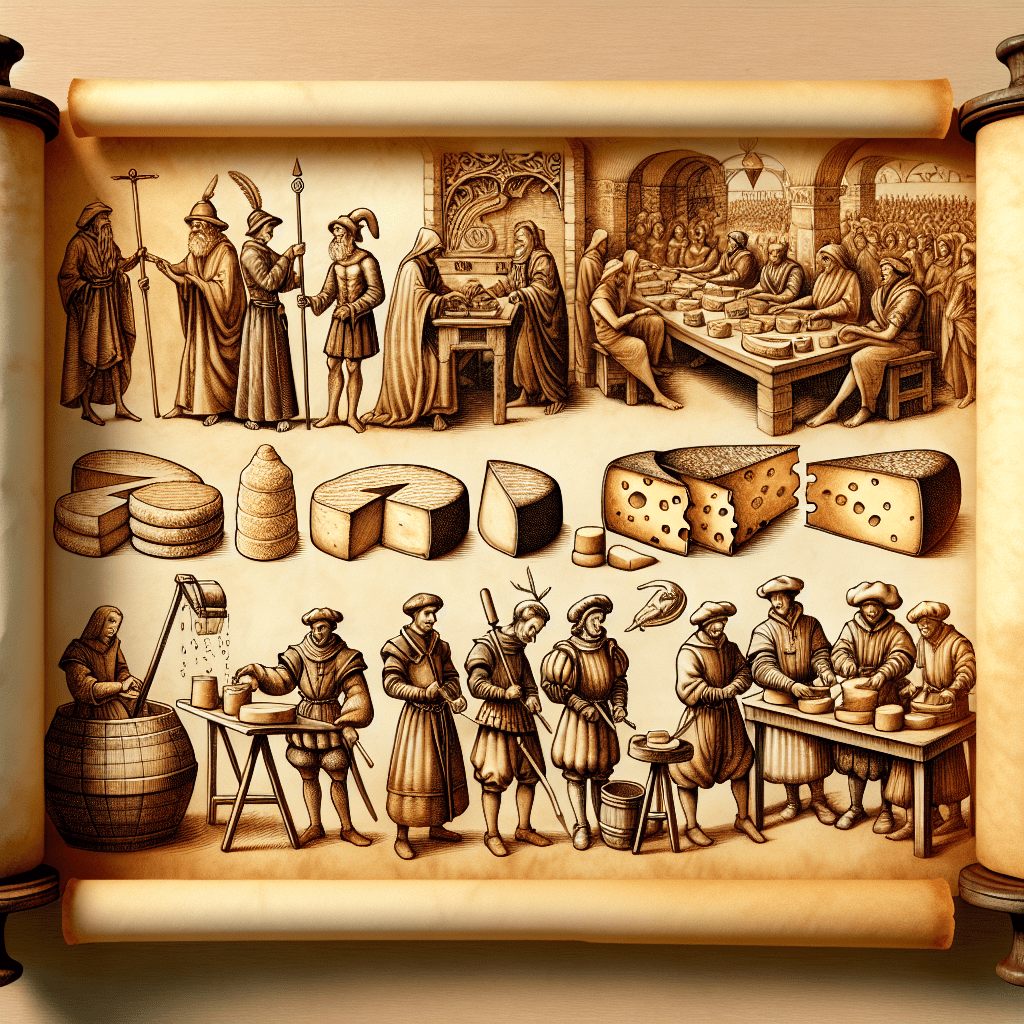[ad_1]
**Cheese and Civilization: The Rich History of a Dairy Delight**
The story of cheese is as old as civilization itself. This humble dairy product, crafted from the milk of cows, goats, sheep, and other mammals, has been a staple in the human diet for thousands of years. Its origins are deeply rooted in the neolithic revolution, a time when humans transitioned from nomadic hunter-gatherers to settled agriculturalists. This pivotal change allowed for the domestication of animals and the innovation of cheese-making. From the Fertile Crescent to the Alpine valleys, cheese has played a crucial role in the development of cultures and civilizations, becoming a global gastronomic phenomenon.
### The Dawn of Cheese-making
The exact origins of cheese are lost to history, but it is believed to have been discovered accidentally. The practice might date back over 7,200 years, with archaeological evidence in Poland suggesting early cheese production. The theory goes that storing milk in containers made from animal stomachs, which contain rennet, would have caused the milk to curdle and separate into curds (solids) and whey (liquid), thus creating an early form of cheese. This serendipitous discovery would not only have enhanced the flavor profile of their diets but also offered a method to preserve excess milk, a crucial innovation for early societies.
As civilizations flourished in ancient Egypt, Greece, and Rome, so too did the art of cheese-making. These cultures refined the process, experimenting with different animal milks and techniques to create a variety of cheeses. The Roman Empire, in particular, played a significant role in the spread of cheese-making knowledge across Europe, with detailed records of cheese types, production methods, and trade.
### Cheese in the Middle Ages
The Middle Ages marked a significant period in the evolution of cheese. Monasteries became centers of cheese production, experimenting with aging processes and producing cheeses that are still popular today, such as Gouda and Roquefort. The feudal system also contributed to the diversity of cheeses, as varying climates, soils, and livestock breeds across different regions influenced the characteristics of the cheese produced.
During this period, cheese began to diverge into two broad categories: fresh, soft cheeses consumed by the poorer strata of society, and aged, hard cheeses that were a luxury for the affluent. This division mirrored the social hierarchy of the time but also illustrated cheese’s permeation throughout all levels of society.
### The Global Spread of Cheese
The Age of Exploration in the 15th and 16th centuries introduced European cheeses to the New World and beyond, while also bringing new varieties back to Europe. Cheese production began to industrialize in the 19th century, particularly in the United States, where the invention of the factory system enabled mass production and distribution. This era also witnessed the birth of the modern science of dairy, further refining cheese production techniques and hygiene standards.
In the 20th century, cheese underwent a transformation from a locally produced artisanal product to a globally traded commodity. However, the late 20th and early 21st centuries saw a resurgence of interest in traditional, artisanal cheeses as part of a broader movement toward sustainable and locally sourced food.
### Cheese Today
Today, cheese is a ubiquitous component of global cuisines, celebrated for its vast array of flavors, textures, and forms. The international cheese market is diverse, ranging from mass-produced products to handcrafted specialties. Cheese festivals, competitions, and specialized cheese shops underscore its cultural significance and enduring popularity.
Cheese’s nutritional value, notably its high protein and calcium content, alongside its versatility, makes it a cherished food item. Its culinary applications are limitless, from simple cheese boards to gourmet dishes, showcasing cheese’s ability to transcend cultural and geographical boundaries.
### FAQs about Cheese and Civilization
**Q: How old is cheese-making?**
A: Cheese-making is believed to be over 7,200 years old, with evidence suggesting early production in what is now Poland.
**Q: Did cheese have religious significance in ancient times?**
A: Yes, in many ancient cultures, cheese had religious connotations. It was often used in rituals and offered to deities.
**Q: What was the role of cheese in medieval society?**
A: Cheese played a dual role in medieval society: it was a staple food for the poor and a luxury item for the wealthy. Monasteries were also key centers of cheese production and innovation.
**Q: How did cheese become a global commodity?**
A: The industrialization of cheese production in the 19th century and global trade routes established during the Age of Exploration contributed to cheese’s global spread.
**Q: What is the difference between artisanal and mass-produced cheese?**
A: Artisanal cheese is made using traditional methods, often on a small scale and with a focus on quality and flavor. Mass-produced cheese is made using industrial methods designed for efficiency and consistency, often sacrificing the depth of flavor found in artisanal cheeses.
Cheese’s journey from a simple method of milk preservation to a culinary delicacy reflects the complexity of human civilization. Its rich history is intertwined with agriculture, economics, and gastronomy, marking it as one of the most fascinating foods in our global heritage. As we continue to explore and innovate in the realm of cheese-making, we pay homage to this dairy delight that has nourished and delighted humans for millennia.
[ad_2]

Leave a Reply